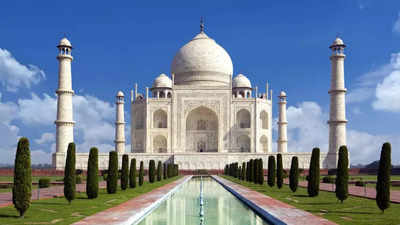The Taj Mahal , a UNESCO World Heritage Site located in Agra , India, is one of the most recognizable and awe-inspiring monuments in the world. Built by Mughal Emperor Shah Jahan in memory of his beloved wife Mumtaz Mahal, this architectural masterpiece is renowned for its stunning beauty and intricate design. The Taj Mahal’s grandeur and the love story behind its creation have captivated people from around the globe.
Over the centuries, it has become a symbol of eternal love and an iconic representation of India’s rich cultural heritage. Aside from its breathtaking architecture, the Taj Mahal is also known for its changing colors during different times of the day, adding to its mystique and allure. Here are 15 fascinating facts that shed light on the Taj Mahal’s history, architecture, and significance.

Fascinating facts about Taj Mahal A monument of love The Taj Mahal was commissioned by Shah Jahan in 1632 in memory of his wife, Mumtaz Mahal, who died during childbirth. This grand mausoleum symbolizes Shah Jahan's profound love and devotion to her. Construction time of Taj Mahal The construction of the Taj Mahal began in 1632 and was completed in 1653, taking approximately 22 years.
It involved a workforce of around 20,000 artisans, craftsmen, and laborers. Taj Mahal’s architectural style The Taj Mahal is a stunning example of Mughal architecture , incorporating elements from Islamic, Persian, and Indian styles. Its design features a grand dome, minarets, and intricate marble inlay work.
Perfect symmetry One of the most striking features of the Taj Mahal is its perfect symmetry. The monument is designed with meticulous symmetry in all aspects, including the gardens, reflecting pools, and even the layout of the surrounding buildings. White marble construction of Taj Mahal The Taj Mahal is primarily constructed of white marble sourced from Makrana, Rajasthan.
The marble’s reflective quality changes its colour throughout the day, appearing pink in the morning, white at noon, and golden at sunset. UNESCO World Heritage status In 1983, the Taj Mahal was designated as a UNESCO World Heritage Site. It is also recognized as one of the "New seven wonders of the world," reflecting its global significance and extraordinary beauty.
The myth of the black Taj There is a popular myth that Shah Jahan planned to build a " Black Taj Mahal " across the Yamuna River as his own mausoleum. However, this second monument was never constructed, possibly due to Shah Jahan’s imprisonment by his son. Architectural genius The chief architect of the Taj Mahal, Ustad Ahmad Lahauri, is credited with blending Persian, Turkish, and Indian architectural elements to create this unique and harmonious structure.
Symbolic garden design of the ‘illustrious tomb’ The Taj Mahal’s garden, known as the Charbagh, is designed to symbolize paradise on Earth. The garden’s four quadrants are divided by water channels, reflecting the Islamic concept of the four rivers of paradise. Tomb of Mumtaz Mahal The central tomb of Mumtaz Mahal is the focal point of the Taj Mahal.
It is surrounded by an octagonal chamber with intricate carvings and is flanked by smaller tombs of Shah Jahan and other family members. Dome design The Taj Mahal’s central dome rises to a height of about 35 meters (115 feet) and is topped with a gilded finial. The dome is designed to be slightly larger than the minarets, creating an illusion of grandeur.
Calligraphic inscriptions on Taj Mahal The monument features beautiful calligraphic inscriptions from the Quran, engraved in black marble. These inscriptions are crafted in a way that they appear the same size from ground level due to a clever optical illusion. Restoration efforts Over the centuries, the Taj Mahal has undergone several restoration efforts to maintain its condition.
These include cleaning the marble to remove grime and pollutants, and repairing structural elements to preserve its integrity. Tourist attraction The Taj Mahal attracts over 7-8 million visitors annually, making it one of the most popular tourist destinations in the world. Its enchanting beauty and the story of its creation continue to captivate and inspire people from all walks of life.
Pietra dura inlay work The walls of the Taj Mahal are adorned with pietra dura, or stone inlay work, featuring semi-precious stones such as lapis lazuli, jade, and amethyst. This intricate craftsmanship creates stunning floral patterns and designs. Also read: 10 animals that travelled to space before humans.




















